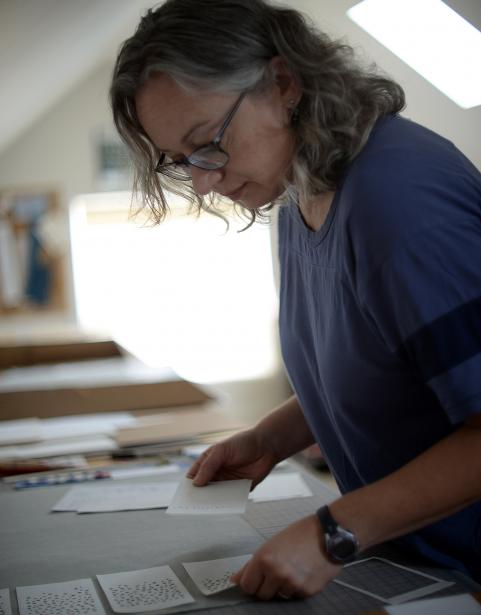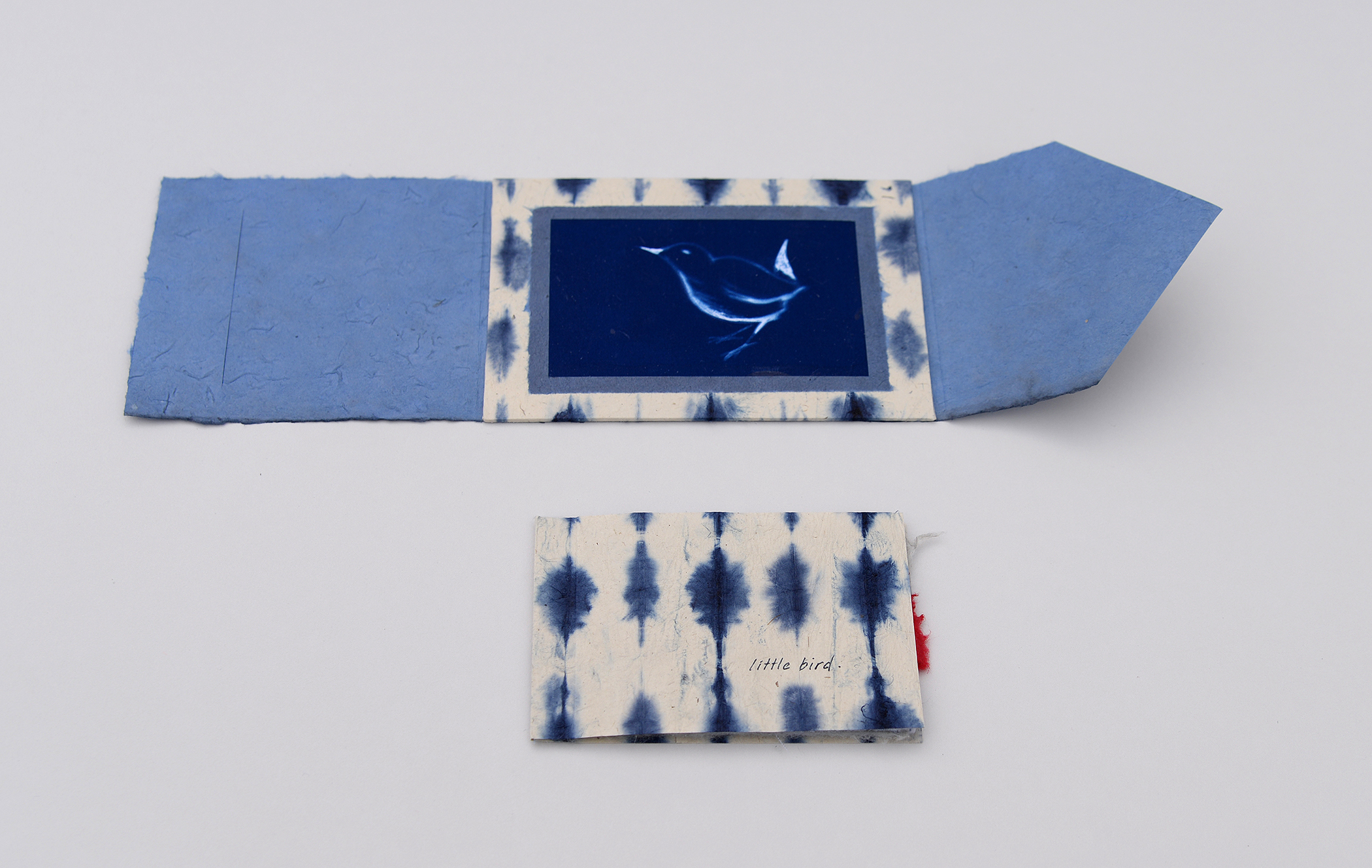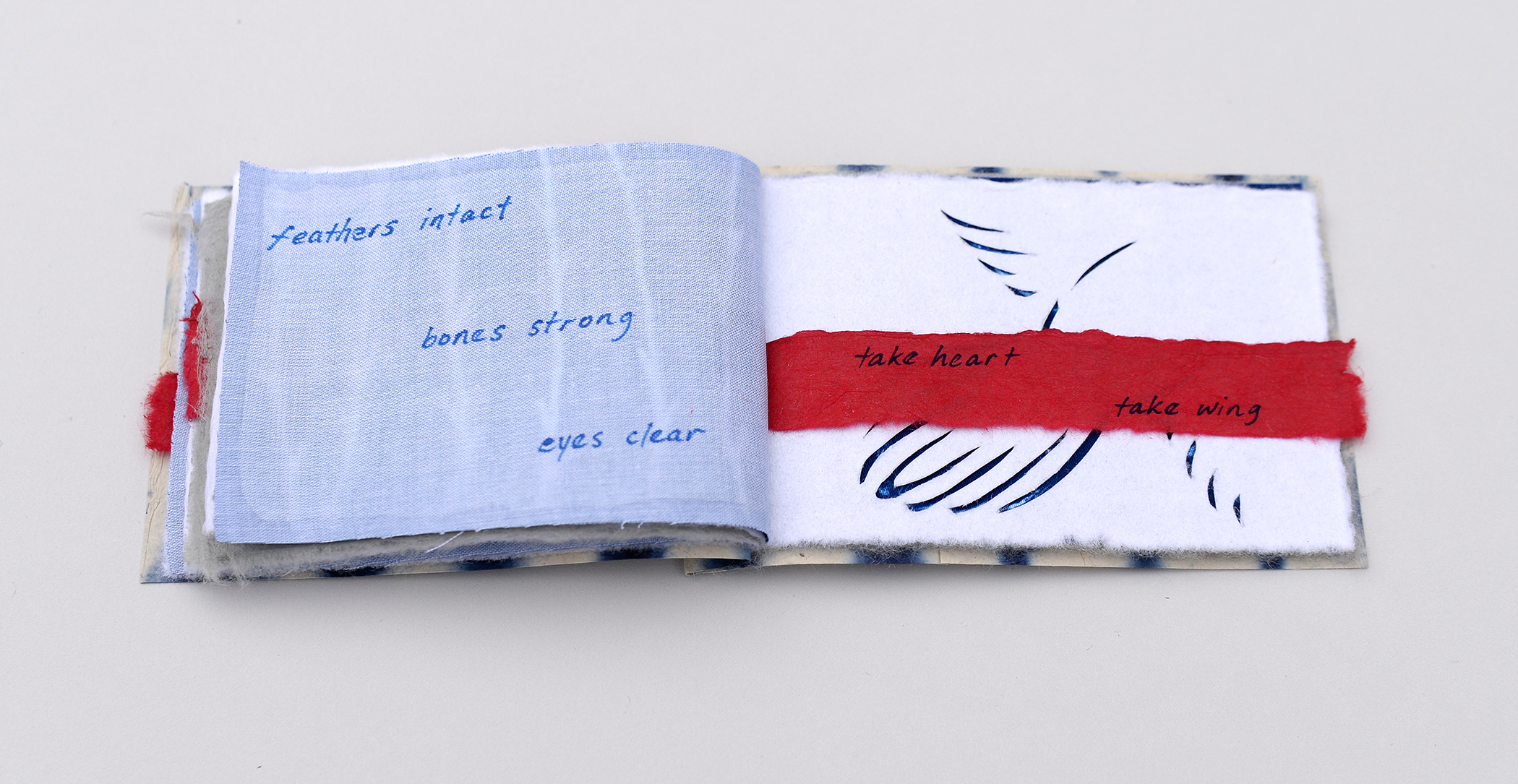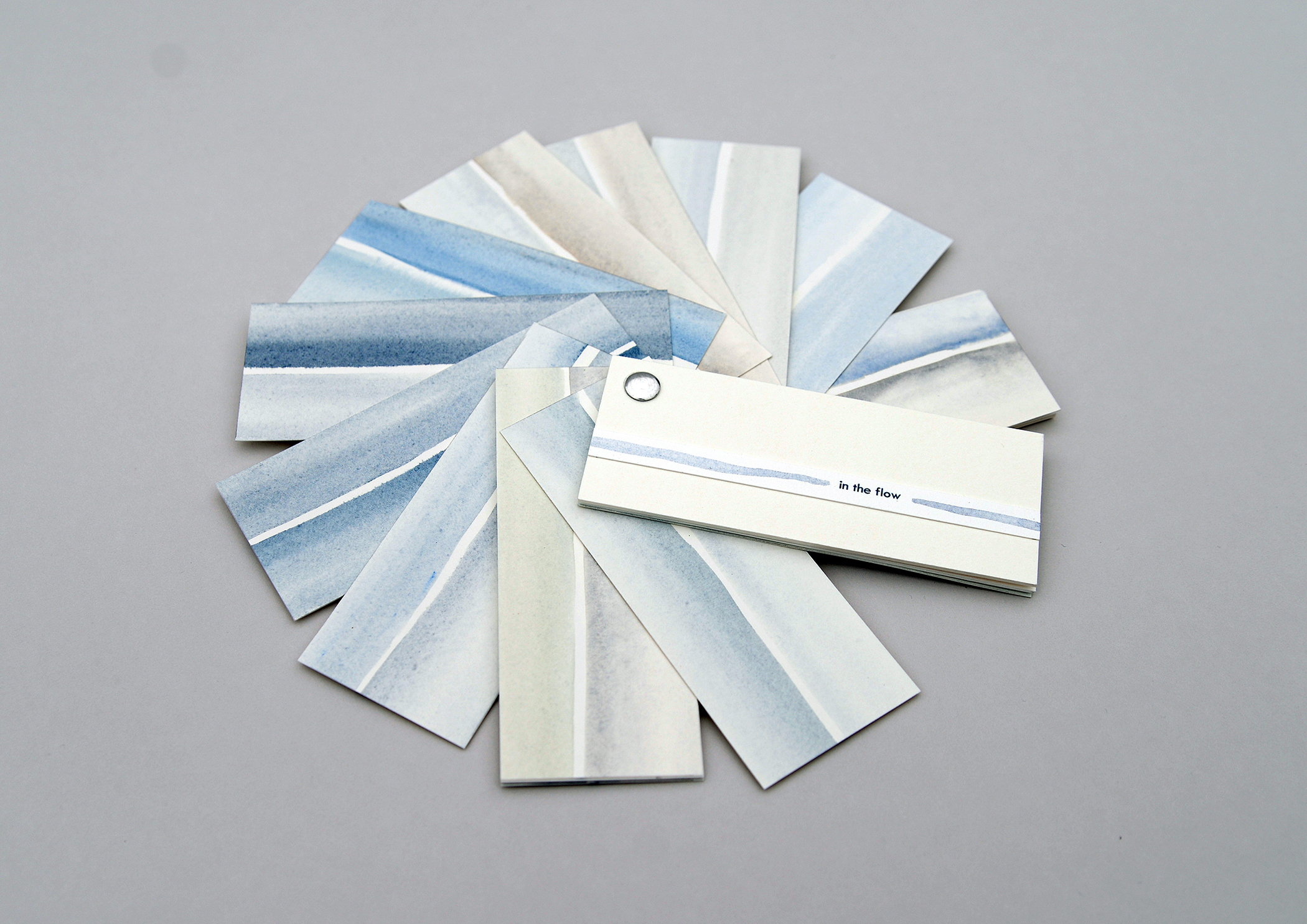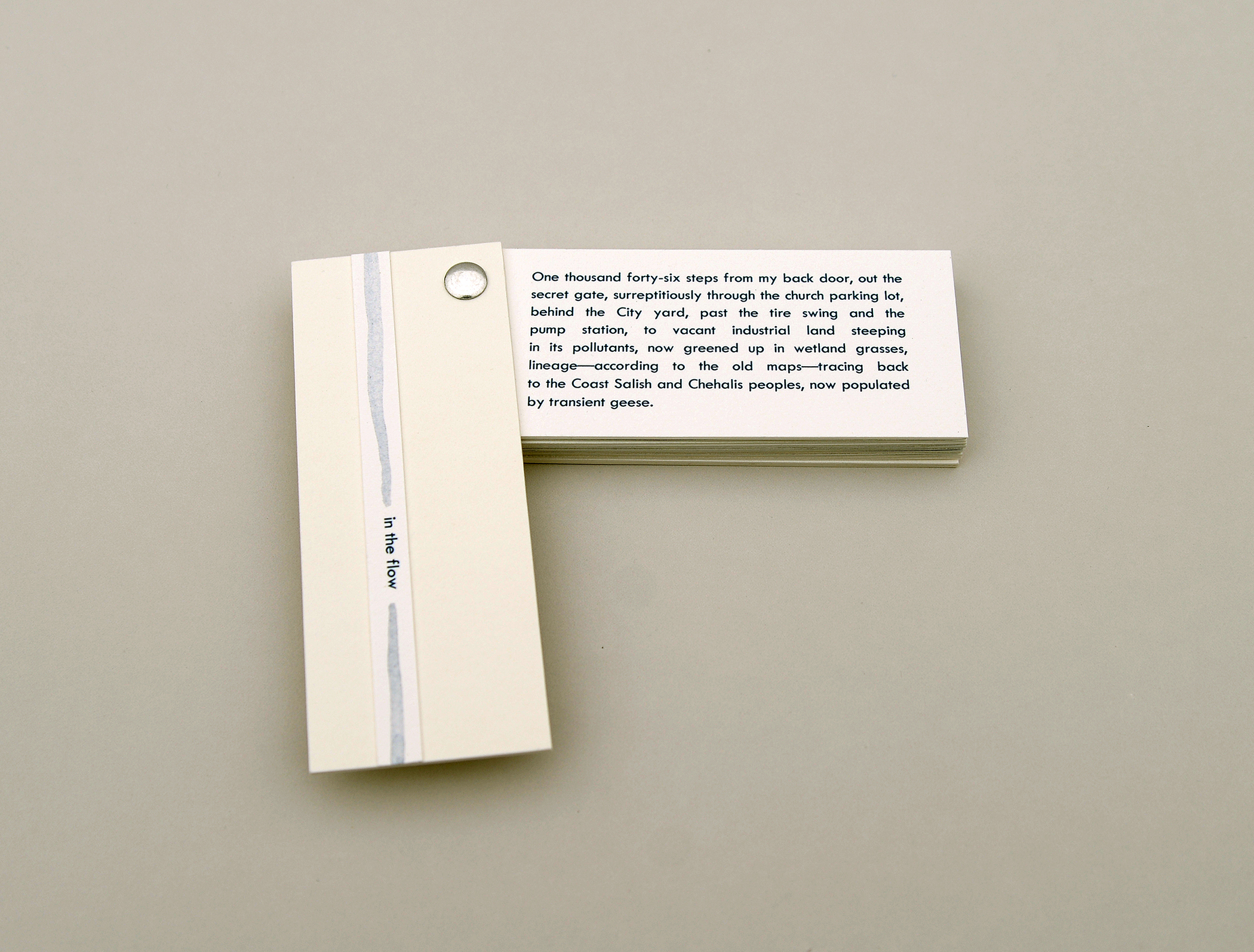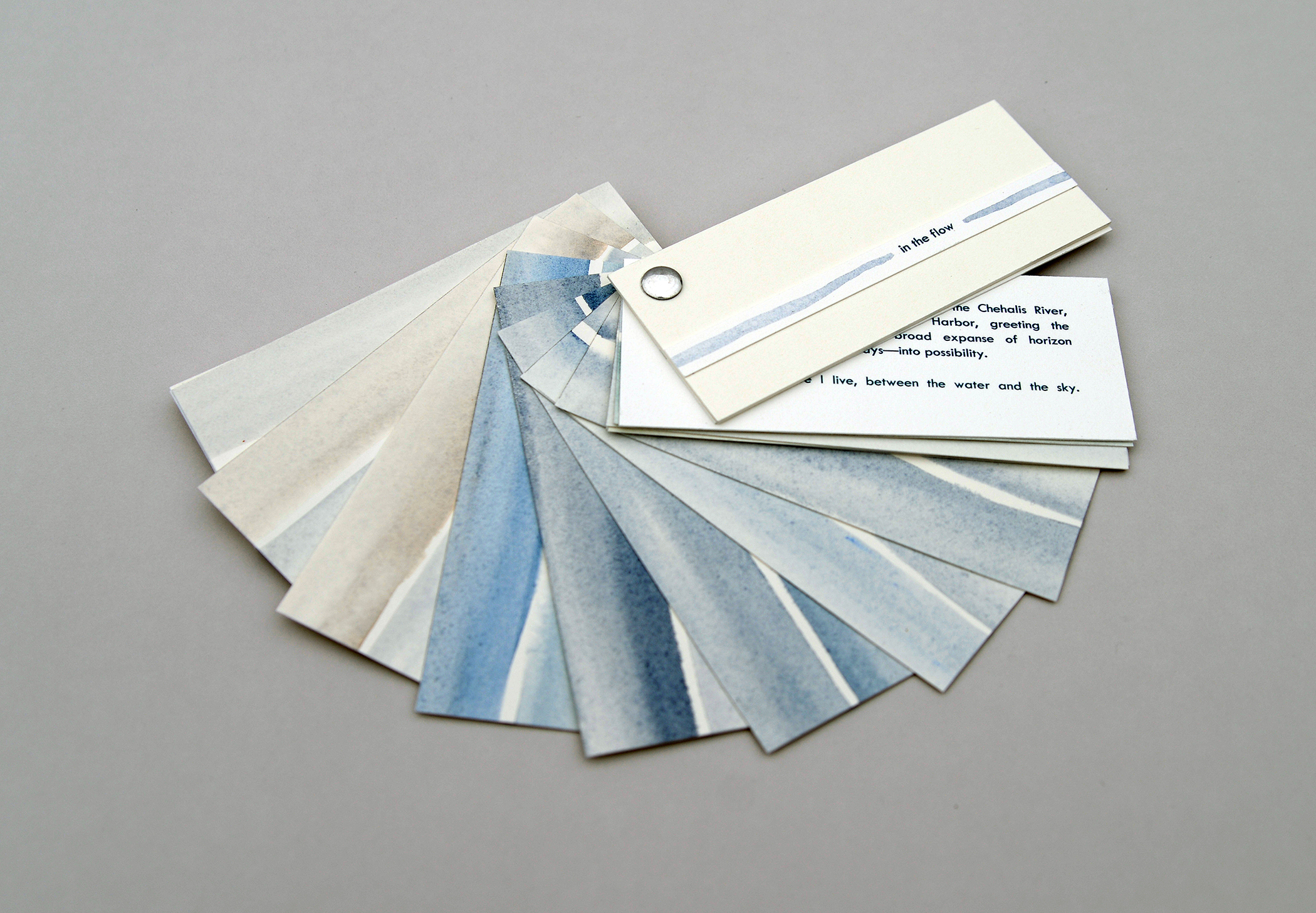Carrie Larson, a visual artist living in Hoquiam, Washington, studied at Whitman College. There she was introduced to Book Arts, which became the springboard for all permutations of her art-making. While much of her work takes inspiration from the natural world, her artist’s books also often explore an internal, emotional landscape. They have been exhibited nationally and are held in the Cynthia Sears Artist’s Book Collection at Bainbridge Island Museum of Art, as well as various university libraries.
In early 2020 I made this piece in response to a call for entry focusing on the theme of transformation, shaping the book to embody that idea. While the magnitude of that year’s losses and divisions could overwhelm this introspective book, its existence remains an act of hope and of healing. Because the moments before transformation can be especially fragile, I crafted this piece to be cradled in the hand, as though one is holding the little bird depicted. The materials are soft, inviting gentle care. And the idea of transformation, found in the narrative itself, is underscored through the processes applied—from paper cut-outs allowing for light and shadow play to cyanotype printing.
This personal artist’s book developed through consideration of place. When I consider “where” I live, immediately a particular view comes to mind—that of a space where water meets sky, not far from my doorstep, where the Chehalis River opens up into Grays Harbor and empties into the Pacific Ocean, horizon line long and blurry. It’s a liminal, contradictory space, changing yet constant, and speaks to creativity. It is also a sustaining, inspiring place, where my walking route takes me routinely, to watch the colors shift with the light and the weather. In contemplating a book form to honor this, I wanted a simple structure (easily portable, like the feelings I carry with me after walking there) that gives a nod to the water cycle itself and the idea of “flow”, while the watercolor palette evokes the emotional effect this place conveys. The form also suggests a designer’s fan of paint samples, which I regularly use as a color consultant. Thus place and identity overlap; I reflect, and manifest, where I live.
